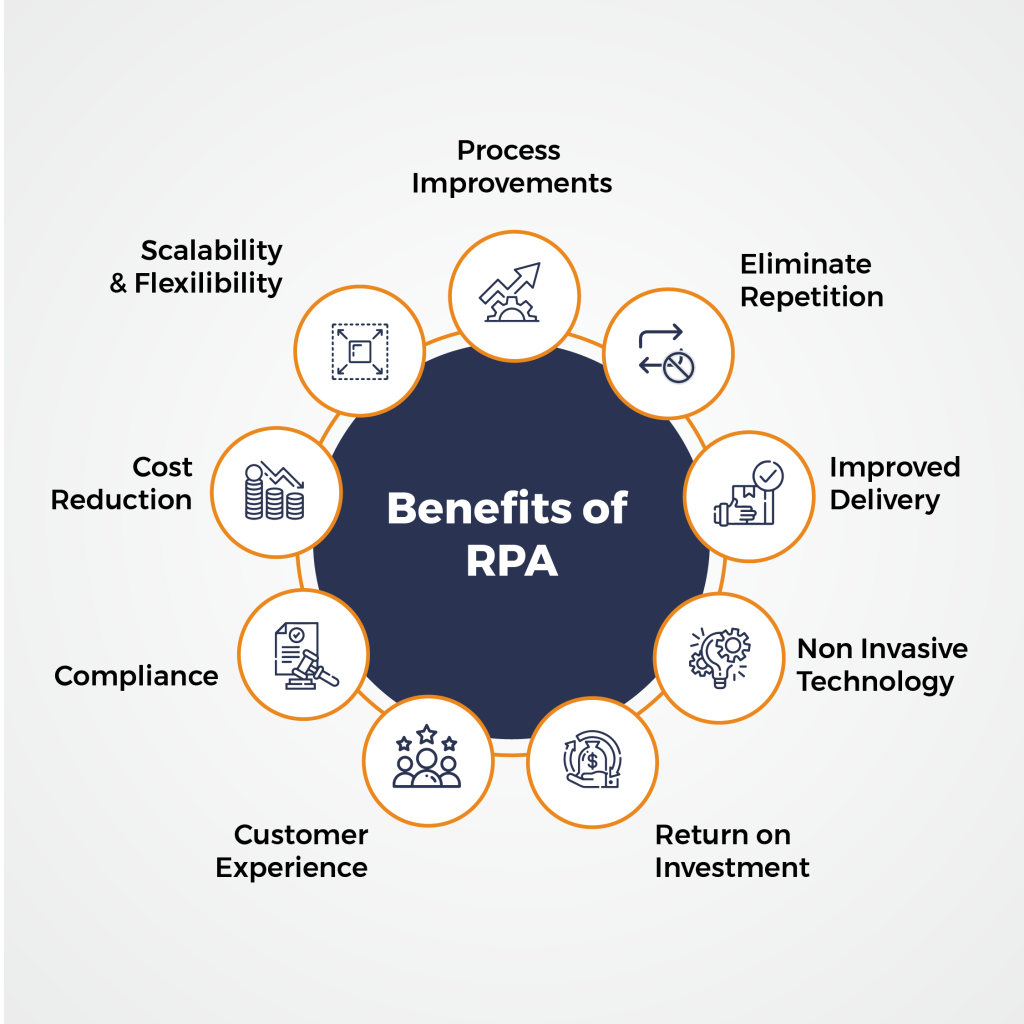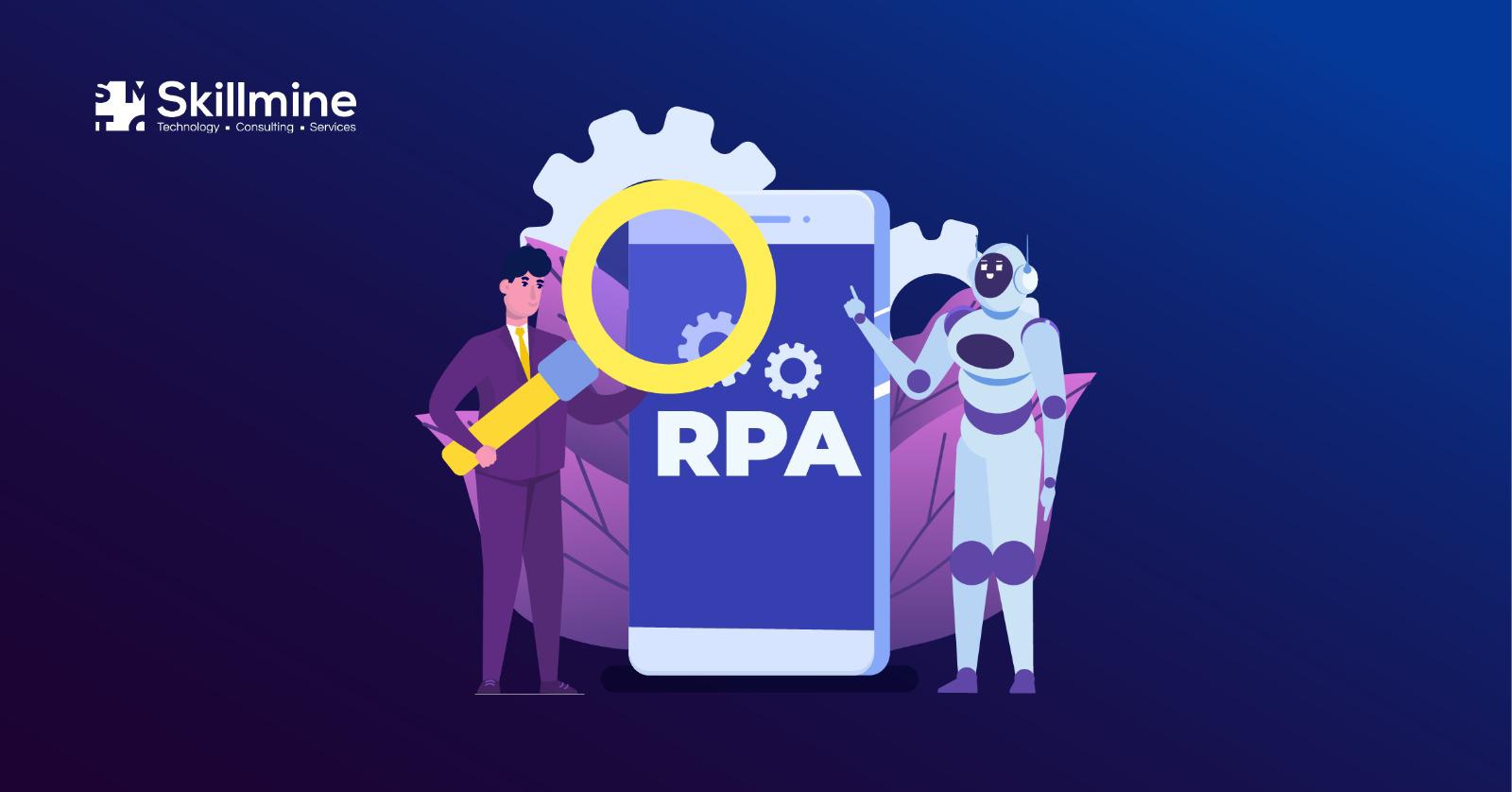The Robotic Process Automation market size, according to a report by Markets and Markets, in 2021 is expected to grow from USD 1.7 billion in 2020 to USD 6.1 billion by 2026, at a CAGR of 25.2% during the forecast period. RPA (Robotic Process Automation) has become increasingly prevalent in businesses over the past few years. According to a report by Deloitte in 2021, 57% of organizations surveyed said they have already implemented RPA or plan to do so within the next year.
Many large companies have adopted RPA, including Walmart, Coca-Cola, and American Express. However, RPA is also becoming more accessible to small and medium-sized businesses as the technology becomes more affordable and easier to implement. It is particularly popular in industries that rely heavily on manual data entry and repetitive tasks, as RPA can help automate these tasks, increase efficiency and improve customer experience.

Let’s look at some ways in which RPA enhances customer experience:
Faster response times
RPA can help automate customer service processes, such as responding to customer inquiries or handling simple requests. This can result in faster response times and quicker resolution of issues, leading to a better customer experience.
A large healthcare organization wanted to improve its revenue cycle management process, which involved managing patient data and insurance claims. However, the process was highly manual and time-consuming, leading to long patient wait times and delayed reimbursements for the organization.
The organization implemented an RPA system that automated key processes, including patient registration, insurance verification, and claim submission. As a result of the RPA implementation, the healthcare organization significantly reduced the time it took to process insurance claims, resulting in faster reimbursements and improved cash flow.
Improved accuracy
RPA can reduce the likelihood of errors that can negatively impact the customer experience, such as incorrect billing or shipping information. By automating repetitive tasks, RPA can help ensure that customer data is accurate and up-to-date.
A leading provider of financial services with operations spread across multiple countries was facing delays due to time-consuming manual loan processing. To address this challenge, the firm implemented RPA (benefits of using RPA) .
The RPA bots could process loan applications with high speed and accuracy, significantly reducing errors in data entry and decision-making. The automation of loan processing also considerably reduced labour costs, as fewer employees were required to process the same volume of loan applications.
Personalization
RPA can help businesses personalize customer interactions by providing real-time information and insights.
An e-commerce company that specializes in selling clothes and accessories online wanted to personalize their shopping experience by providing product recommendations, tailored discounts, and personalized communication. However, the company didn’t have enough resources to do it manually. The firm used RPA bots to collect and analyze customer data to personalize the shopping experience.
RPA bots collected data from different sources, analyzed the data and identified patterns using Machine Learning algorithms. The bots provided personalized recommendations, discounts, and communication to customers, leading to a 15% increase in sales for the company.
Improved Customer Retention
Personalized communication offers increased customer satisfaction and retention rates.
A telecom company wanted to improve customer retention by reducing churn rates. They faced challenges in identifying customers who were likely to churn and providing personalized offers to keep them on board. RPA bots were deployed to collect data, segment customers, and provide customised offers to customers likely to churn. RPA bots monitored the customer’s response to the personalized offers and updated their profiles accordingly. This helped the company to optimize the retention process and improve the customer experience.
Reduced operational costs
RPA-based automation reduced the need for manual data collection and analysis, resulting in significant cost savings.
A financial services company faced challenges with the manual processing of back-office operations. The company had a large volume of data that needed to be processed, and the manual process was time-consuming and error-prone. The company used RPA to automate back-office operations, such as data entry, reconciliation, and reporting. The bots used optical character recognition (OCR) technology to extract data from scanned documents. The bots also provided real-time data analysis, allowing the company to make informed decisions. RPA-based automation reduced increased operational efficiency by reducing the processing time by 70%, allowing the company to process a higher volume of data.
Conclusion
RPA ( features of RPA ) is vital in improving customer experience by automating and streamlining processes, enabling organizations to provide faster, more efficient, and more personalized customer services. Additionally, RPA can provide insights and data analytics to help organisations better understand their customers’ needs and tailor their services accordingly. Overall, RPA has the potential to transform the customer experience by providing a more efficient and effective customer service experience.
Skillmine’s RPA services exhibit its Artificial Intelligence capabilities. IT automation and business process automation are two branches of Skillmine RPA. Skillmine has helped several businesses eliminate waste, increase productivity and speed up internal processes with RPA services. Check out this ebook: 6 Reasons to adopt artificial intelligence in your business, to learn how Technologies like RPA and AI can empower your business.
Looking for expert technology consulting services? Contact us today.





